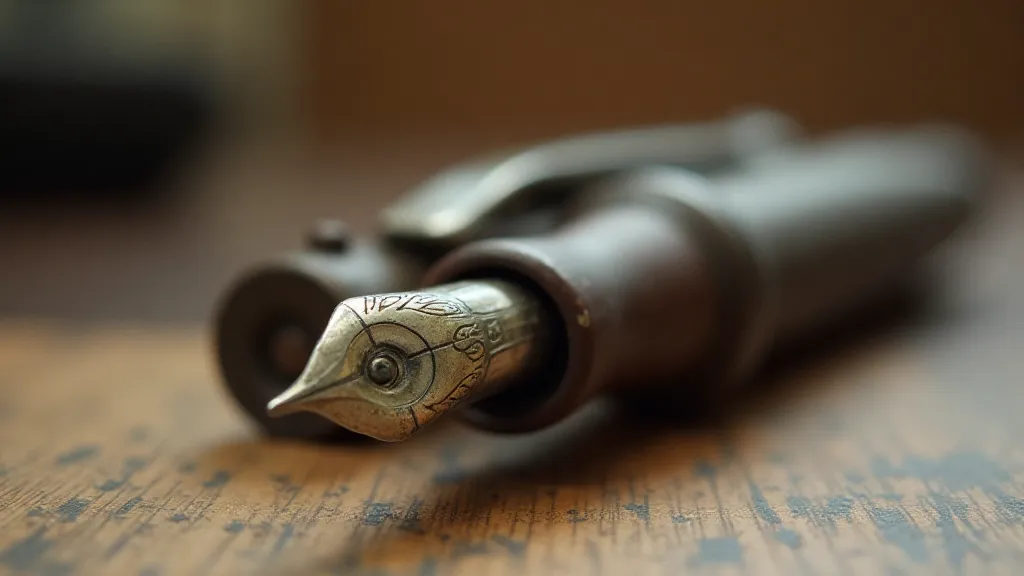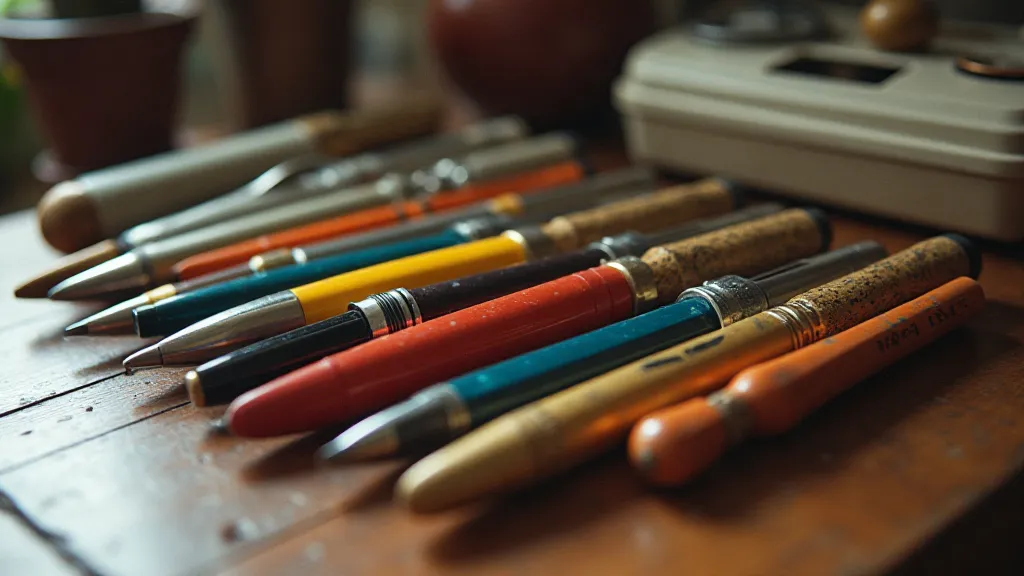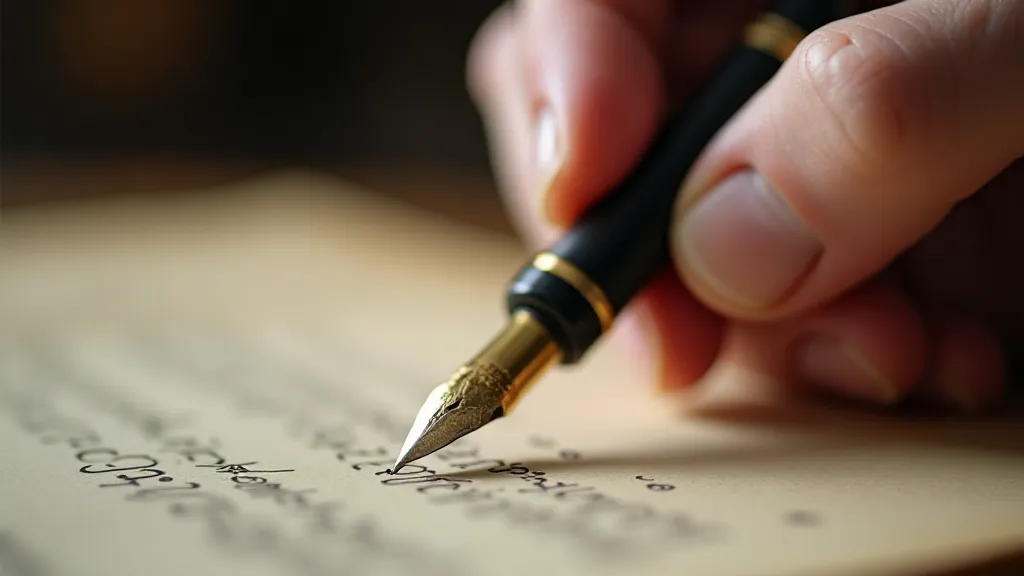Cartography of Absence: Mapping Pen Designs Through Time
There's a peculiar melancholy that settles upon a collector of antique pens. It’s not sadness, precisely, but a profound awareness of absence. The hands that held them, the letters they wrote, the stories they helped to tell – all gone, leaving behind only these beautiful, silent objects. Each pen is a tiny monument to a vanished moment, a tangible link to a past we can only partially grasp. To truly appreciate these treasures isn’t merely about admiring their aesthetics; it's about tracing the stories embedded within their design, mapping the evolution of creativity across generations.
This isn't simply about cataloging brands – Waterman, Parker, Sheaffer, Conway Stewart, Montblanc – though those are crucial. It’s about understanding *why* they looked the way they did, how materials and technology dictated form, and how societal tastes shaped their appearance. We’ll embark on a visual timeline, not just of pen brands, but of the design philosophies that propelled them.
The Dawn of Mass Production: Late 19th Century – Early 20th Century
Before the late 1800s, pens were largely bespoke creations, labors of individual craftsmanship. The invention of vulcanized rubber and the development of celluloid revolutionized the industry, allowing for mass production. Early fountain pens, like those from Waterman (founded 1884) and early Parker pens (founded 1888), were often simple, utilitarian designs. They reflected the era's focus on practicality. The materials were predominantly hard rubber (ebonite) – dark, utilitarian, and somewhat inflexible. These pens prioritized functionality over elaborate decoration. The focus was on a consistent, reliable ink flow. They were tools first, objects of beauty second.

The early Parker pens, notably the “Lucky Pencil” with its retractable nib, were ingenious but also born out of necessity - a readily available, cheaper alternative to existing pens. They were aimed at a wider consumer base. The development of the lever-filling mechanism became a signature of Waterman, while Parker championed the button filler as technology progressed.
The Art Deco Era: 1920s – 1930s
The Roaring Twenties and the subsequent Depression marked a dramatic shift. The influence of Art Deco architecture and design permeated everything, including pens. We saw a move towards more streamlined forms, geometric patterns, and the embrace of new materials like Bakelite (a revolutionary early plastic). Sheaffer, founded in 1912, rose to prominence during this period, known for its distinctive clip design. Montblanc, established in 1906, began to cultivate an image of luxury and exclusivity, producing pens that were both elegant and robust.
The emphasis shifted. Pens weren't just tools; they were statements. The swirling lines, the geometric inlays, the introduction of vibrant colors – all reflected the optimism and exuberance of the era, quickly followed by the quiet dignity of the Depression years. The materials became more refined, often involving layering and contrasting colors. There was a desire to create something aspirational.
Post-War Optimism and Technological Advancement: 1940s – 1960s
World War II placed a temporary halt to many luxuries, including pen design. But the post-war boom fueled innovation. The introduction of piston fillers (often pioneered by Montblanc) and vacuum fillers offered larger ink capacities and improved writing experience. Celluloid production flourished, allowing for increasingly complex patterns and vibrant colors. We saw the rise of demonstrator pens - transparent pens that allowed users to see the ink level. This was a direct response to user demand.
The 1950s and 1960s brought a new level of sophistication. Conway Stewart, a British firm, was celebrated for its intricate patterns and customizability. Parker introduced the 51 – a design so iconic it remained in production for decades. The pens of this era possessed a confidence and elegance, reflecting the booming economy and a sense of global progress.
The Plastic Revolution and Beyond: 1970s – Present
The 1970s saw a move towards less expensive materials – plastics – in an effort to cater to a broader consumer base. While this resulted in a perceived decline in quality by some, it also made pens more accessible. Ballpoint pens gained popularity, challenging the dominance of fountain pens. The rise of disposable pens impacted the luxury pen market, forcing manufacturers to innovate.

The late 20th and early 21st centuries witnessed a resurgence in interest in vintage pens and a renewed appreciation for craftsmanship. Modern pen manufacturers are blending classic designs with contemporary materials and technology. Materials like resin and titanium offer new possibilities for color and texture. The focus has shifted back towards luxury and personalization. Brands like Namiki and Sailor from Japan are bringing unique aesthetics and innovative filling systems to the global market. This era also sees a heightened awareness of sustainability and ethical sourcing impacting material choices.
The Enduring Legacy
Collecting antique pens is more than just accumulating objects. It's about connecting with history, understanding the evolution of design, and appreciating the skill and artistry of the craftspeople who created them. Each scratch, each imperfection, each faded ink stain tells a story – a silent testament to the human desire to communicate, to create, and to leave a mark on the world. The absence we feel when handling these pens isn't a source of sadness, but a profound reminder of the richness and complexity of the human experience. The pens themselves are not merely writing instruments; they are time capsules, meticulously crafted to capture a moment, a style, a feeling that continues to resonate across generations. And in understanding their journey, we gain a deeper appreciation for the enduring power of the written word.
The cartography of absence, then, isn't about what’s lost, but about what remains – a legacy of creativity, innovation, and the unwavering human spirit.






